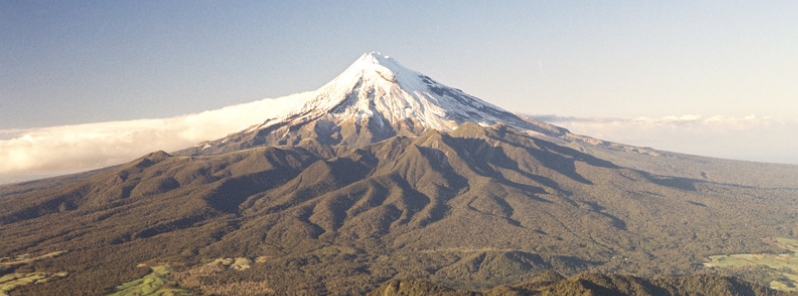Rare earthquakes detected near Mount Taranaki, New Zealand

Two small earthquakes were registered near New Zealand's Mount Taranaki this week– weak and shallow M3.2 on December 8, 2020, and M1.6 on December 11. According to GeoNet, earthquakes near the volcano are considered rare. The last eruption of this volcano took place in 1800.
On Tuesday, December 8, GeoNet registered a weak tremor about 20 km (12 miles) northwest of Stratford, with a magnitude of 3.2 and a depth of 8 km (5 miles).
Just three days later, another small tremor was recorded in the same area on December 11, with a magnitude of 1.6 and a depth of 7 km (4 miles).
"You may have spotted two small quakes close to Mount Taranaki this week," GeoNet wrote. "Earthquakes close to the mountain aren’t that common."
GeoNet noted that in the past 10 years, only 20 earthquakes have been recorded near the volcano. "But these appear to relate to faults buried under the volcano."
The agency said they are monitoring Taranaki closely, as well as all the other volcanoes in New Zealand.
You may have spotted 2 small quakes close to Mt Taranaki this week. Earthquakes close to the mountain aren’t that common, 20 in the past 10yrs, but these appear to relate to faults buried under the volcano. As always we are keeping a close eye on Taranaki and all our volcanoes. pic.twitter.com/BdYGNpkvsb
— GeoNet (@geonet) December 11, 2020
A confirmed VEI 4 eruption took place around 1655, VEI 3 around the year 150, and VEI 5 in 1700 BCE ± 100 years.
Geological summary
The nearly symmetrical, steep-sided cone of Taranaki (previously known as Egmont), is a large andesitic stratovolcano on the west coast of central North Island. It is surrounded by a ring plain of debris-avalanche and lahar deposits that extend to the coast.
Taranaki is the youngest and SE-most of a group of three volcanoes beginning with the Pleistocene Kaitoke Range.
Fanthams Peak is located on the S flank, and four lava domes are on the lower N and S flanks. Multiple episodes of edifice collapse have occurred in the past 50 000 years.
Explosive activity, sometimes accompanied by pyroclastic flows and lava dome growth, has occurred frequently throughout the Holocene.
Featured image credit: GNS Science

Commenting rules and guidelines
We value the thoughts and opinions of our readers and welcome healthy discussions on our website. In order to maintain a respectful and positive community, we ask that all commenters follow these rules.